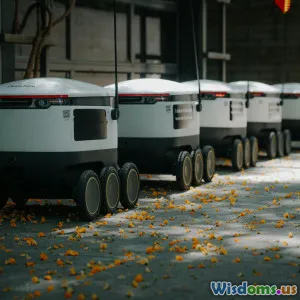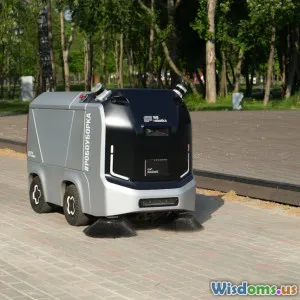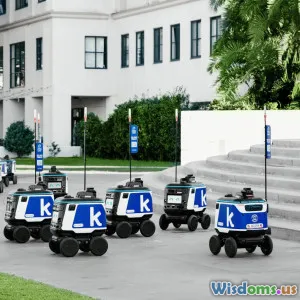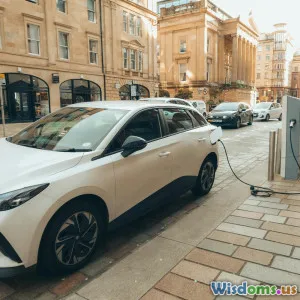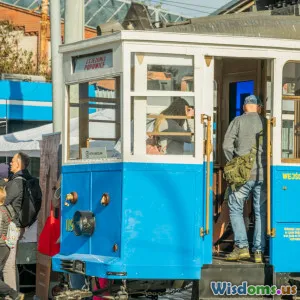
Challenges in City Infrastructure
8 min read Explore the complex challenges modern city infrastructures face amid evolving car and transportation technologies. (0 Reviews)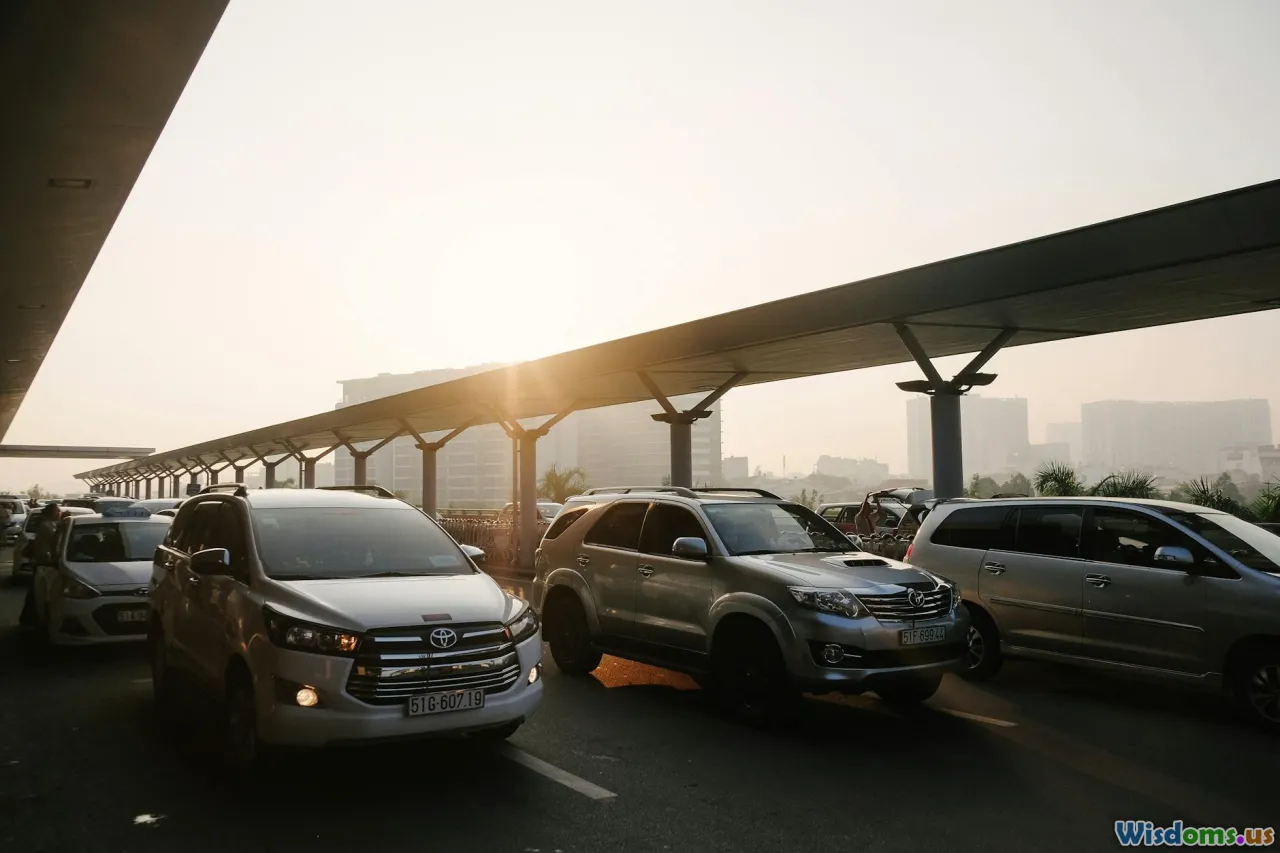
Challenges in City Infrastructure Related to Cars & Transportation Technology
Modern cities are vibrant, ever-evolving hubs where transportation technology and urban infrastructure intersect in complex ways. As advancements in cars and transportation systems accelerate, city infrastructures are put to the test, facing unique challenges ranging from congestion and pollution to integrating emerging technologies like electric vehicles (EVs) and autonomous systems. Understanding these challenges is crucial not only for city planners and policymakers but also for residents and stakeholders invested in creating sustainable urban mobility.
Introduction: The Pressure Cooker of Urban Transit
Every day, millions of vehicles weave through city streets, fulfilling the vital need for mobility but simultaneously creating pressure on urban infrastructure. Innovations such as electric vehicles, ride-sharing platforms, and autonomous cars promise transformative benefits, yet their introduction often outpaces the readiness of existing infrastructure. How do cities adapt outdated roadways, parking, and energy grids to accommodate these changes? The future demands answers—or risk stalling urban progress.
Urban Congestion: The Ever-Persistent Bottleneck
Traffic congestion remains the most palpable challenge for cities worldwide. According to the 2023 INRIX Global Traffic Scorecard, drivers in some of the world's largest urban centers waste upwards of 100 hours annually stuck in traffic. This congestion is primarily due to increasing vehicle ownership, limited road capacity, and persistent single-occupancy car use.
Causes and Consequences
Gridlocked streets not only waste time but contribute significantly to economic losses and elevated greenhouse gas emissions. The Texas A&M Transportation Institute estimates that congestion cost the U.S. economy nearly $175 billion in 2022 alone. Cities like Los Angeles and Mumbai epitomize this struggle, where expansions of roadways have failed to curb snarls due to induced demand—the phenomenon where new roads encourage more driving.
Technological Interventions
Smart traffic management systems utilizing Artificial Intelligence (AI) and real-time data analytics show promise. For example, Singapore's intelligent transport system monitors vehicle flow and adjusts signals dynamically, reducing delays. However, many cities lack both the infrastructure investments and legacy system compatibility to implement such technologies fully.
Electrification and The Energy Challenge
The global pivot to electric vehicles is vital for reducing urban pollution, but it poses substantial infrastructure hurdles.
Grid Load and Charging Infrastructure
EVs require reliable, widespread charging stations. Cities like Oslo have aggressively expanded charging networks, with one of the highest per capita charger ratios globally, facilitating Norway’s marriage of urban living and EV adoption. Conversely, sprawling American cities confront issues: insufficient chargers, long wait times, and grid strain during peak usage.
Utilities face increasing pressure to upgrade electrical grids. The Los Angeles Department of Water and Power foresees a necessary 50% capacity increase to support EV growth, demanding expensive infrastructure upgrades and smart grid technologies.
Equitable Access
Not all neighborhoods benefit equally. Low-income and historically marginalized communities often lack EV charging access, creating a divide in who benefits from cleaner transportation. A 2022 study from the Brookings Institution highlights these disparities and calls for inclusive infrastructure planning.
Autonomous Vehicles: Promise and Infrastructure Gaps
Autonomous vehicles (AVs) are set to redefine personal and public transportation. However, the urban infrastructure must evolve to accommodate the requirements of AVs.
Road Infrastructure and Communication Networks
AVs rely heavily on advanced sensors, 5G connectivity, and detailed digital maps. Cities like Pittsburgh are pioneering dedicated AV corridors, yet most urban areas lack the necessary road markings, signage, and communication infrastructure.
Regulation and Public Acceptance
Beyond physical infrastructure, regulatory frameworks must be established to safely integrate AVs alongside traditional traffic. Moreover, public trust is critical, and cities must orchestrate pilot programs coupled with education campaigns to ease transitions.
Integrating Multi-modal and Shared Mobility
The rise of bikes, e-scooters, ride-sharing, and micro-mobility solutions offers alternatives to cars, posing both opportunities and challenges.
Spatial and Safety Challenges
Cities are challenged to retrofit streets to accommodate new modes while ensuring pedestrian safety. San Francisco’s struggles with e-scooter clutter and accidents highlight the difficulty of balancing innovation with order.
Data Management and Policy
Data collected from shared mobility providers can optimize city planning, but data sharing agreements remain contentious. Policymakers must craft frameworks balancing privacy with utility for smarter infrastructure deployment.
Climate Resilience and Sustainability
The growing urgency of climate change adds pressure for urban transport infrastructure to be not only efficient but resilient.
Flooding and Extreme Weather
Many urban roadways and transit systems are vulnerable to floods, heatwaves, and storms. Cities like Miami invest in resilient infrastructure by elevating roads and integrating permeable pavements.
Emission Reduction Targets
Tightened emission regulations compel cities to innovate rapidly. Low-emission zones in London and Paris demonstrate concrete policy responses paired with infrastructure changes like pedestrianized areas and expanded public transit.
Conclusion: Charting the Path Forward
The challenges of integrating emerging cars and transportation technology into city infrastructure are multifaceted—technical, social, and political. Success demands a coordinated approach: investing in smart, flexible infrastructure; crafting equitable policies to ensure access; engaging communities; and embracing innovation with cautious optimism.
Urban infrastructure must move beyond reactive upgrades toward proactive, sustainable planning. By doing so, cities can unlock the full benefits of transportation technology, fostering vibrant, efficient, and resilient urban environments for generations to come.
References
- INRIX Global Traffic Scorecard 2023
- Texas A&M Transportation Institute Urban Mobility Report
- Brookings Institution, "Equity in EV Infrastructure", 2022
- Los Angeles Department of Water and Power, 2023 Grid Capacity Analysis
- Case studies: Singapore Intelligent Transport System, Norway EV infrastructure
- City of Pittsburgh Autonomous Vehicle Pilot Reports
- San Francisco E-Scooter Safety Audits
Rate the Post
User Reviews
Popular Posts












